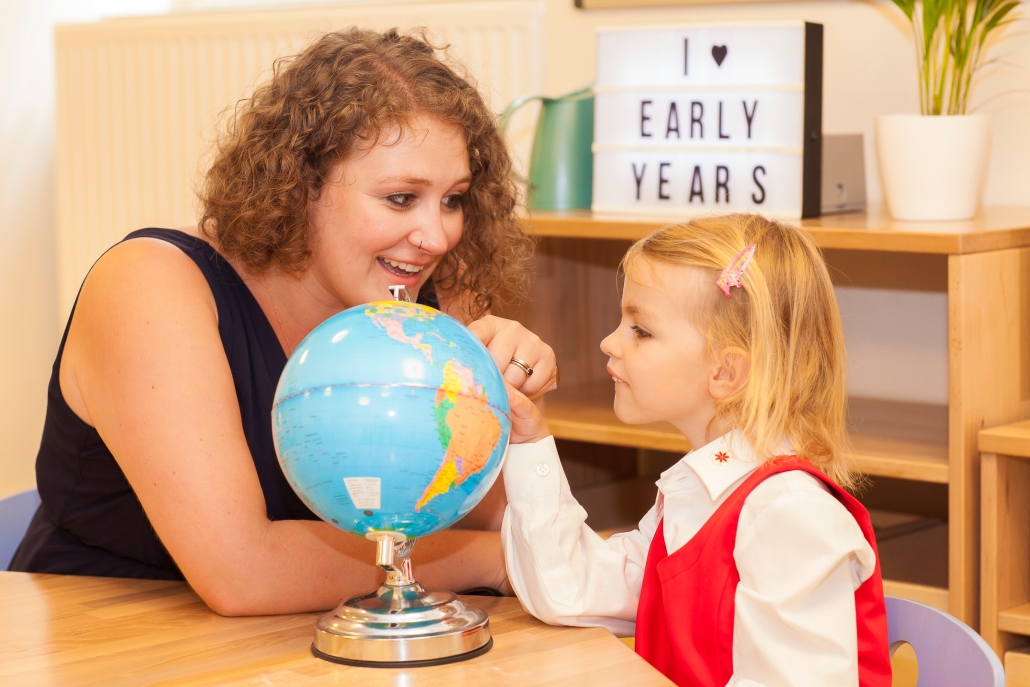The problem solvers of the future and the magic of play
By Stefanie Mussnig, Head of Early Years Centre at the AMADEUS International School Vienna
As adults, when we are faced with a new problem, what do we do in order to find a solution? We try to look at the problem from every angle; we study it, research it, make predictions about it, create hypotheses, discuss it with others, experiment, reflect, try different approaches – we ‘play around’ with it until we find a solution. This highly complex process can take days, months, even years. Simultaneously, others need to be able to rely on the fact that the very people who are striving to solve that problem, continue to care, be interested in and engaged by it. If they discontinue the activity the problem remains unsolved.
Taking all this into account, we must ask ourselves: How do we prepare future generations with the necessary skills to be able to do that?; To motivate students so that they want to solve the problems they will face and continue to care, be interested in, and engaged with the world around them.
The beauty of early childhood is that ‘solving problems’ comes naturally to children. Children are natural-born problem solvers. We have to let them explore their worlds and solve the problems that they are faced with. There is no better way we can prepare them for the future.
The complex processes mentioned earlier can often be effortlessly undertaken by a child, taking action in their own learning.
For young children, playing around is often about Problem Solving together with a common goal to build something, to discover, or to invent. Problem solving creates new experiences in learning even though the students are often too young to recognise that they have new knowledge and skills and that they have been learning all along.
Of course, one may enquire, ‘what about traditional academic material like reading, writing and arithmetic?’
What if I told you that a child who is exploring shadows is learning about measurement, time and distance, the seasons, weather and the natural and physical environment around them. At the same time their best friend may be building sandcastles; learning about forces, weight, stability, material properties. If we inspire both students to track and share their progress they will start to communicate their experiences with a variety of media; whether that be by writing, drawing, or discussing. By allowing students to play, it ensures that they will be engaged until they have found their answer and they will have transformed a tremendous amount of what they learnt along the way into their own knowledge and skill set via their own personal experiences.
As long as we keep drawing a dividing line between academic learning and play, we feel the pressure of having to integrate both into our curriculums. We don’t have to integrate ‘play’ into mathematics, for example, as educators we make mathematics visible in the child’s ‘play’ either explicitly or implicitly.
The truth is: Play is not the opponent to academia, it is the root.
Only once that can be understood, can we take charge to make change happen. Instead of allowing isolated academics to enter into the Early Childhood Curriculum, we ought to support Primary and Middle Schools to bring ‘Play’ back into theirs.
The problem solvers of the future are sitting in our classrooms right now. If we want to inspire engaged, investigative, creative problem solvers, then we need to act it. Change starts with us.
If we trust in the Power of Play for all ages, and if we openly and proudly celebrate ‘Play’ for what it is: the highest form of learning – then our students will do so as well.
If we look at how much fun ‘solving problems’ is for children, we realize what all can be possible if we just manage to preserve this natural excitement for problem solving. How better can we prepare our students for their unknown future?



